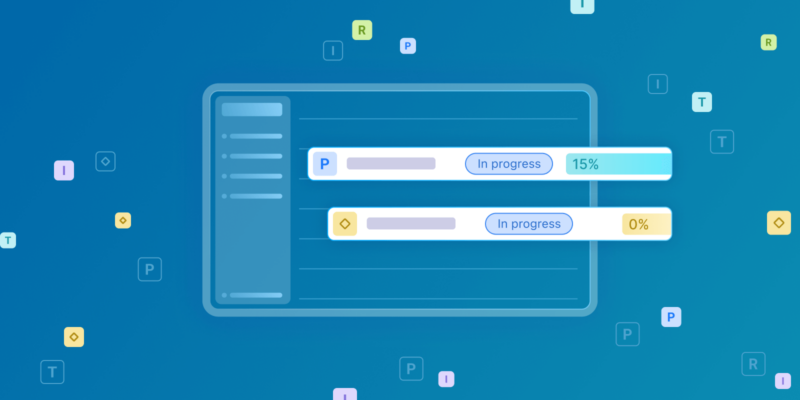Hiring just one employee takes a whole lot of company time and resources. Now imagine having to hire five, ten, or even fifty employees for a large-scale project. Without having an efficient hiring process in place, your business can end up being completely bankrupted by poor HR initiatives, mis-hires, and turnover.
While some companies may accept that hiring and turnover is a trial and error-process, we know better. The hiring process can run more smoothly, be more economical, and produce better results than how things may be traditionally done, especially when it comes to hiring large groups of people. How successful you are in the hiring process, however, depends a lot on how it starts.
Select and Train Your Recruitment Team
Before you even send out a job posting or start looking for candidates, you need to have a good recruitment team in place. Who makes up a good recruitment team? Look to individuals such as:
- Hiring managers
- Supervisors
- Experienced employees in the positions you’re hiring for
Once you have a team selected, the team should be provided with a recruitment toolkit. This toolkit should have everything that they have to know when it comes to choosing the best employee. Some basic kit inclusions are:
A definition of your company culture and how to tell if an employee may be a good fit.
The job position and the requirements (skill, knowledge, experience, etc.) that must be met.
Any licensing or additional certifications that may be required.
Some additional considerations that should be explained in the kit are a thorough study of the current labor market for that job position and the type or number of candidates they can expect to apply, as well as how to measure an applicant’s return on investment. To simplify this process, many large tech companies entrust hiring to expert IT talent providers, who can provide employees tailored to your company‘s culture and requirements.
Managing Workflow
Every person on the team must be allocated a specific job or set of jobs for the hiring process. Each part of the hiring process must also then have agreed-upon or company-determined requirements or standards that must be met before a candidate can be qualified to go through to the next stage of the interview process. For example, if a candidate doesn’t have a certain level of certification that would qualify him or her for the job, they should not then be allowed to pass to the next stage of the hiring process. To enhance efficiency, incorporating a structured workflow that clearly outlines these stages will ensure smooth transitions and systematic progression. Additionally, effective resource planning is crucial to allocate the necessary personnel and tools at each stage, optimizing the entire hiring sequence and ensuring all team members are utilized optimally.
Recruiting Candidates
Now that everyone’s on board with how and why candidates are going to be selected and screened, it’s time to meet you, potential future employees. There are a number of different talent sourcing strategies that you may choose to use, such as:
1. Through Job Postings
Sites like Monster and Craigslist are renowned for drawing in a large number of applicants, though they may not always be the best qualified for the job.
2. Job Fairs
Another way that a lot of businesses recruit both large and small groups of qualified employees is through job fairs. Send out a press release, take out an ad in a newspaper, or advertise the job openings at your next trade show.
3. Industry-Specific Publications
Advertising in a magazine that is directly related to your industry or niche is a great way to attract some good-quality talent. Hiring through LinkedIn can also be effective, especially when using a targeted LinkedIn job search to find suitable candidates.
4. Social Networks
Utilizing professional tools like LinkedHelper can streamline the process by automating tasks such as sending connection requests, personalized messages, and even following up with potential candidates, saving recruiters valuable time and effort while expanding their network of potential hires.
5. Inside Referrals
Time and time again, inside referrals have resulted in high-quality new hires who tend to stick around for the long haul. Get the word out to friends, family, and current employees about a job opening and you’re sure to get some good, long-standing employees.
6. Look Yourself
You don’t have to cast your rod out there and wait for the fish to bite; you can actively seek out qualified candidates yourself by using a number of different resources. Some of your best bets are:
- Resume banks
- Career placement offices
- Job boards
- Social media
The main problem with looking for yourself is that it can be quite a time-consuming, so if you’re doing a large mass hire, this won’t likely be the best use of your time.
The Initial Review Process
The first step of the screening process is the initial review. This involves going through all of the resumes that you’ve had land on your desk and determining who moves on, who doesn’t, and who is a maybe. Some resumes that you receive will make it glaringly apparent that the particular candidate wouldn’t be a good fit for the company, whereas some may leave you with some additional questions that you will need to follow up on and ask about (i.e. if an applicant has stated references available upon request). As you review, take note of any resume summary provided, which can offer valuable insights into each candidate’s qualifications and career objectives. Make a note on the applicant’s file that you’re waiting for a follow-up and keep an eye out for the information you’ve requested.
Coordinating Interviews
For anyone who’s passed the initial review, it’s time for them to brush up on their interviewing skills. The best way to work through hiring a large group of people is to pick up the phone and start calling up qualified applicants. You want to ask things like:
- What knowledge and skills they are bringing to the job?
- How they enjoyed their past job.
What motivates them to work
Pay attention to things such as how well they communicate under duress and try throwing in questions that they may not be expecting in the interview, such as their opinion on a popular television show. This will give you a chance to uncover the real person underneath the well-rehearsed interviewee’s exterior.
Next up: group testing and interviews. Anyone who you feel may be a good fit for the phone interview should be invited to come in and be tested and interviewed in a group setting. Group interviews differ quite a bit in comparison to individual interviews. Besides asking the applicant a series of situational questions, you can choose to give the group a common task that they’d be performing in the job role they’ve applied for, then watch how they work, see how they react, and gauge their engagement with the project and the other applicants.
Anyone who you’ve found fairly suitable for the job should only then be contacted for a one-on-one interview. This is usually the final round of applicants that you’ll be taking a good, hard scrutinizing look at before deciding whether or not to offer them the job. You may conduct one or more individual interviews, depending on a number of factors such as how many employees you’re hiring, how much time you have, what the job position is, and so on.
Background Checks
The final piece of the puzzle is conducting a good, thorough background check of every candidate that you’re considering hiring. At the initial interview phase, the candidates should have already provided items like their Social Security numbers, driver’s license numbers, and passports to help them verify their identity, and their citizenship, and perform a criminal record check.
From then onwards it’s all a matter of offering the best candidates the job and hoping that your search will come to a successful conclusion. What’s important for businesses to remember is that no matter how small or how large of a group of individuals they may be hiring for a project, the focus should always be on having the most qualified candidates working for them who are a suitable fit for their company’s culture above all else.
Streamlining Hiring with Project Management Software
In the complex and often fragmented process of recruiting, it’s essential to maintain organization and efficiency–this is where project management software becomes invaluable. By integrating a robust system like Birdview into your recruitment strategy, you can consolidate all hiring-related data into one centralized platform. This allows for seamless tracking of every stage in the hiring process, from initial resume reviews to final interviews and background checks.
Using a project management tool, teams can automate routine tasks, set reminders for follow-ups, and maintain a clear overview of each candidate’s progress through the hiring pipeline. Moreover, resource planning tools within the software help allocate the right tasks to appropriate team members, ensuring that no part of the recruitment process is overlooked. This holistic approach not only saves time but also enhances decision-making, providing a structured workflow that supports finding the best candidates efficiently and effectively.
By adopting project management software, organizations can significantly improve their hiring operations, making the entire process more streamlined, transparent, and successful. To see how project management software can streamline your processes, try a free Birdview trial here
This post is a guest contribution by ClearFit, the easiest way for small businesses to find employees and hire the best person.



